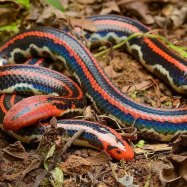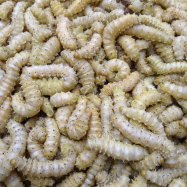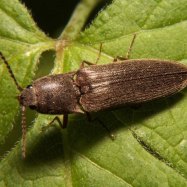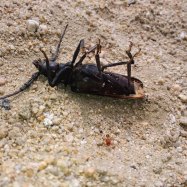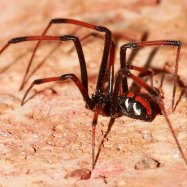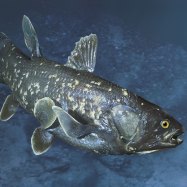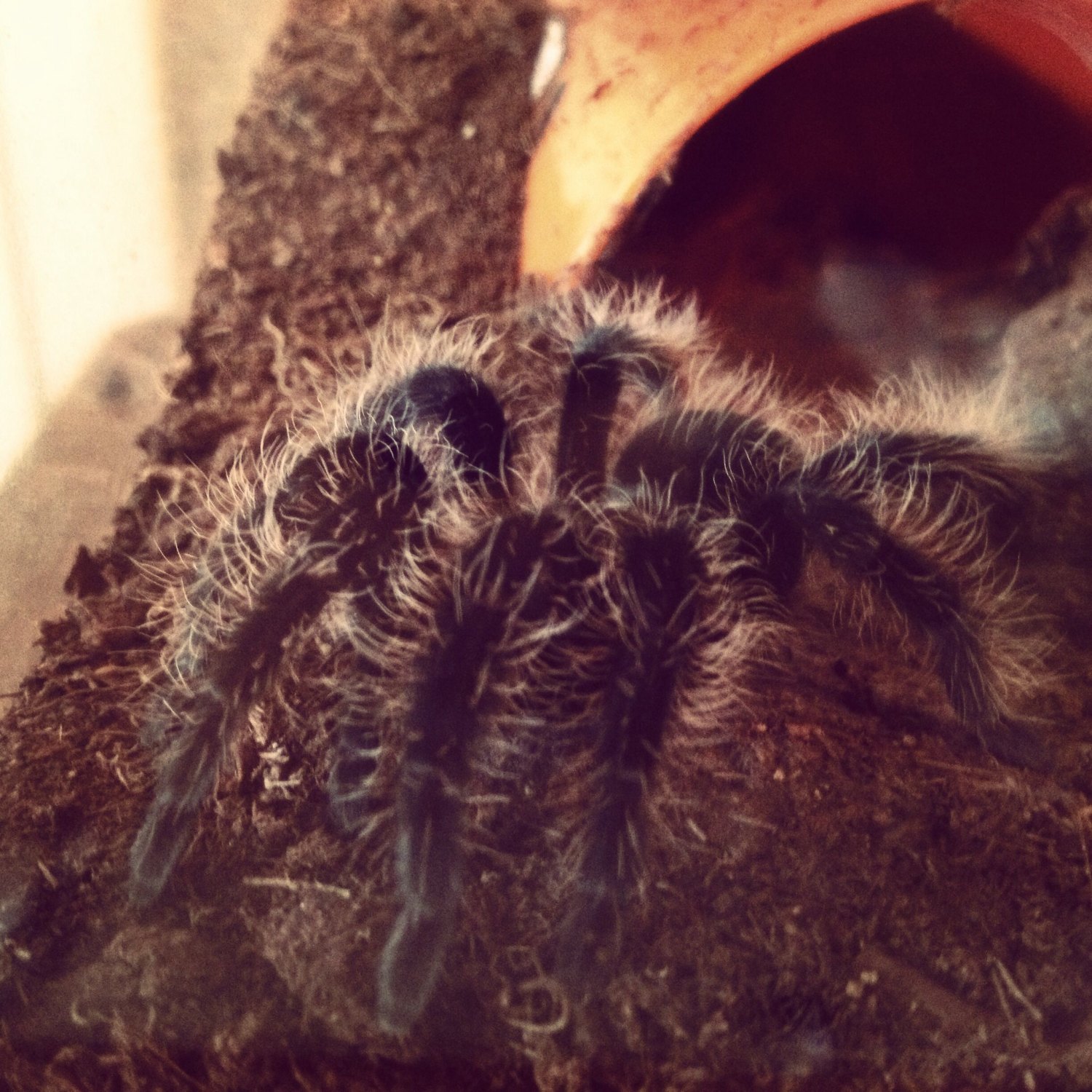
Curly Hair Tarantula
5 to 6 inches (12 to 15 cm)
The Curly Hair Tarantula is a fascinating arachnid found in many parts of the world. This ground-dwelling spider can grow up to 6 inches in length and belongs to the family Theraphosidae. Known for its large and heavy body, it is a commonly kept pet among spider enthusiasts. Its distinctive curly hair gives it a unique appearance. Are you brave enough to handle this beautiful creature?
Animal Details Summary:
Common Name: Curly Hair Tarantula
Kingdom: Animalia
Habitat: Tropical rainforests and savannas
The Exotic and Fascinating Curly Hair Tarantula
Deep in the tropical rainforests and savannas of Central America lives a creature that may send shivers down your spine – the Curly Hair Tarantula. Known for its dark and fuzzy appearance, this eight-legged arachnid has captured the attention and curiosity of animal lovers and arachnophobes alike. Let's take a closer look at this fascinating creature and find out what makes it stand out among the vast array of animal species.A Name That Describes It All
Scientifically known as Brachypelma albopilosum, the Curly Hair Tarantula is also commonly referred to as the Curly Hair or Honduran Curly Hair Tarantula Curly Hair Tarantula. This name is derived from its distinct feature – long, curly hairs that cover its entire body. These hairs serve several purposes, such as defense mechanisms against predators, temperature regulation, and even sensing vibrations.Classification and Habitat
As an animal, the Curly Hair Tarantula belongs to the Animalia kingdom and the Arthropoda phylum. It is further classified under the Arachnida class and the Araneae order. This spider is a member of the Theraphosidae family, which includes over 800 species of tarantulas.The Curly Hair Tarantula is native to countries in Central America, particularly Honduras, Costa Rica, Belize, Guatemala, and Nicaragua. They inhabit tropical rainforests and savannas, where they can find suitable shelter and prey.
Carnivorous Feeding Method
Like most tarantulas, the Curly Hair is a carnivorous species that feeds on insects, small rodents, and even small birds. They have an interesting feeding behavior where they first paralyze their prey with their venom and then use their fangs to inject digestive enzymes into the prey's body Copperhead. The enzymes break down the prey's internal organs, allowing the tarantula to suck out its liquefied insides.Size and Appearance
One of the most distinguishing features of the Curly Hair Tarantula is its size and appearance. They are considered large and heavy-bodied spiders, with females growing up to 5-6 inches (12-15 cm) in length and males reaching about 4 inches (10 cm). Their bodies are dark brown or black, and their legs are a lighter shade of brown or reddish-brown.But it's their long, curly hairs that make them truly stand out. These hairs, also known as setae, are found all over their body and can grow up to several inches. They serve as the tarantula's defense mechanism, creating a barrier between itself and potential predators.
A Unique Ground-Dwelling Species
Unlike other tarantula species that prefer to live in trees or burrows, the Curly Hair Tarantula is a ground-dwelling species. They create burrows in the ground, where they can hide from predators and wait for prey to come along. These burrows can be as deep as 30 centimeters, and the tarantula lines them with its silk to create a comfortable and safe shelter.The Mysteries of Molting
One of the most fascinating behaviors exhibited by the Curly Hair Tarantula is the process of molting. As they grow bigger, these spiders need to shed their exoskeleton to make way for a larger one. During this process, the tarantula will stop eating and become more reclusive. Molting can take several hours, and after it's complete, the spider will consume its old exoskeleton for added nutrients.The Beauty of Nature
Despite their formidable appearance, the Curly Hair Tarantula serves an important role in maintaining the balance of the ecosystem. As a predator, they help control the population of insects and other small animals, preventing their overpopulation. They also serve as a food source for other animals, such as birds and mammals, making them an essential part of the food chain.The Fascinating World of Tarantulas
The Curly Hair Tarantula may be one of the most well-known species of tarantulas, but it is just one of the many that make up this diverse group of arachnids. With over 900 species of tarantulas found all over the world, each one has its unique characteristics and behaviors.Tarantulas are often portrayed as dangerous and aggressive creatures, but in reality, they are shy and usually only attack when provoked or feel threatened. Most tarantulas have venom that is harmless to humans, and their bites are often compared to a bee sting.
These creatures are also fascinating in the way they communicate. While they may not have the ability to speak, tarantulas can produce vibrations and use their setae to communicate with each other. They can also create sounds by rubbing their body parts together, such as their legs and fangs.
Conservation Efforts for the Curly Hair Tarantula
Unfortunately, like many other animal species, the Curly Hair Tarantula is facing threats to its survival. The destruction of its natural habitat, mainly due to deforestation and human activities, is a significant concern. The illegal pet trade is also a growing problem, with tarantulas being sold as exotic pets to collectors around the world.To protect the Curly Hair Tarantula and encourage its conservation, measures must be taken to preserve its natural habitat and regulate the pet trade. It is also essential for people to educate themselves on the proper care and handling of these creatures, as many tarantulas die in captivity due to inadequate care.
The Fascination with Curly Hair Tarantulas
The Curly Hair Tarantula is not just a fearsome-looking creature; it is also a fascinating one. Its unique characteristics and behaviors have captured the interest of scientists and animal enthusiasts alike. But perhaps even more fascinating is the fact that these creatures have been around for millions of years, surviving and adapting to changes in their environment.The next time you come across a Curly Hair Tarantula or any other tarantula species, remember to appreciate the beauty and wonder of these creatures that have been roaming the earth for centuries. And instead of fear, let curiosity and fascination be your guide in understanding the amazing world of tarantulas.

Curly Hair Tarantula
Animal Details Curly Hair Tarantula - Scientific Name: Brachypelma albopilosum
- Category: Animals C
- Scientific Name: Brachypelma albopilosum
- Common Name: Curly Hair Tarantula
- Kingdom: Animalia
- Phylum: Arthropoda
- Class: Arachnida
- Order: Araneae
- Family: Theraphosidae
- Habitat: Tropical rainforests and savannas
- Feeding Method: Carnivorous
- Geographical Distribution: Central America
- Country of Origin: Honduras, Costa Rica, Belize, Guatemala, and Nicaragua
- Location: Ground-dwelling species
- Animal Coloration: Dark brown or black body with long, curly hairs covering the entire body
- Body Shape: Large and heavy-bodied
- Length: 5 to 6 inches (12 to 15 cm)
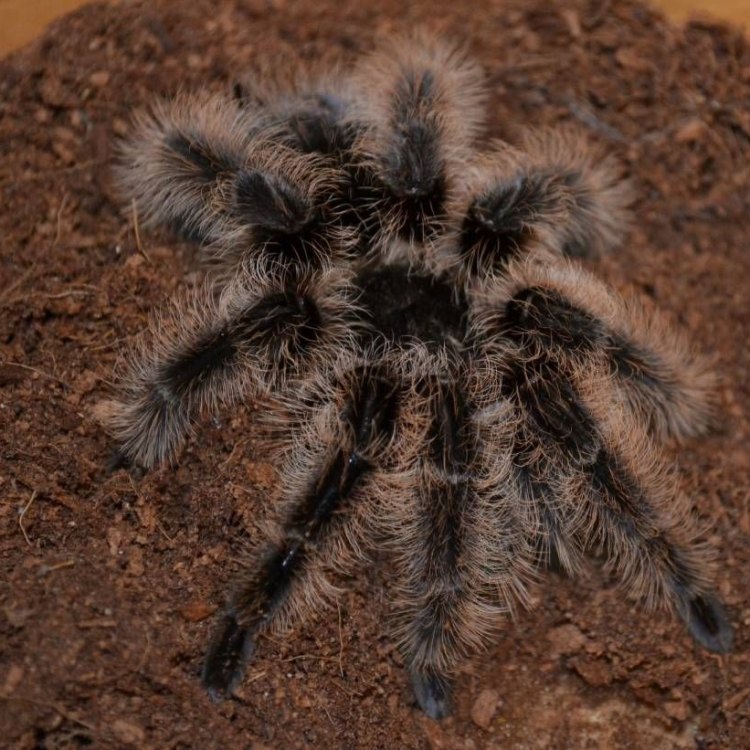
Curly Hair Tarantula
- Adult Size: Medium to large-sized tarantula
- Average Lifespan: 10 to 15 years
- Reproduction: Sexual
- Reproductive Behavior: Males perform courtship rituals and deposit sperm on a web before mating with females
- Sound or Call: Tarantulas do not produce sounds or calls
- Migration Pattern: Non-migratory
- Social Groups: Solitary
- Behavior: Generally docile and slow-moving, but can become defensive and flick urticating hairs or bite when threatened
- Threats: Habitat loss and collection for the pet trade
- Conservation Status: Not evaluated (NE)
- Impact on Ecosystem: Help regulate populations of insects and other small invertebrates
- Human Use: Popular in the pet trade
- Distinctive Features: Curly hairs covering the body, stout body shape, and large size
- Interesting Facts: 1. Curly Hair Tarantulas are known for their calm and docile nature, making them popular as pets. 2. They have specialized hairs called urticating hairs on their abdomen, which they can flick off as a defense mechanism. 3. The hairs are irritating to the skin and eyes of potential predators, causing discomfort and discouraging them from attacking. 4. Curly Hair Tarantulas are ground-dwelling and construct burrows in the wild for protection. 5. Unlike some other tarantula species, the venom of Curly Hair Tarantulas is considered mild and not medically significant.
- Predator: Birds, small mammals, and reptiles
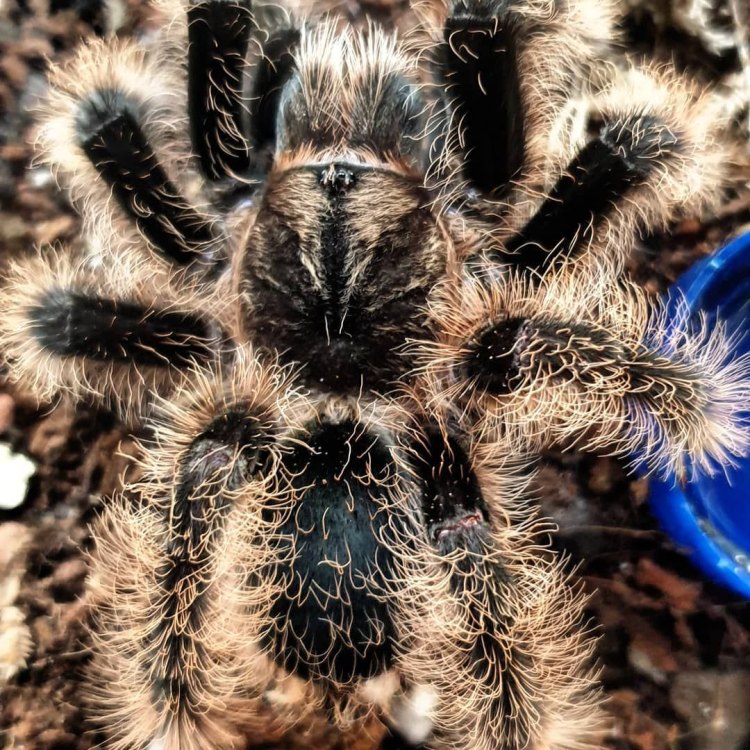
Brachypelma albopilosum
The Fascinating World of Curly Hair Tarantulas
When most people think of spiders, they imagine eight-legged creatures with sleek bodies and thin, delicate hairs. However, there's a spider species that defies these common stereotypes - the Curly Hair Tarantula. With its unique curly hairs and stout body shape, this fascinating creature has captured the attention and hearts of many, making it a popular choice in the pet trade. But there's more to this tarantula than just its distinctive appearance PeaceOfAnimals.Com. In this article, we'll take a closer look at the world of Curly Hair Tarantulas, from their behavior and habitat to their impact on the ecosystem and interactions with humans.Appearance and Size
The Curly Hair Tarantula, also known as the Brachypelma albopilosum, is a species of tarantula native to Central America and parts of South America. As an adult, they are considered a medium to large-sized tarantula, with a leg span of around 5-6 inches. They have a stout and robust body shape, with a dark-colored abdomen covered in dense, curly hairs. These curly hairs are the most distinctive feature of the Curly Hair Tarantula, giving them their common name. The rest of their body is typically a dark brown or black, with some individuals having a reddish-orange hue on their legs.Lifespan and Reproduction
Curly Hair Tarantulas have an average lifespan of 10 to 15 years in captivity, making them a long-term commitment for pet owners. They reach sexual maturity at around 3-4 years of age, with males generally having a shorter lifespan than females. This tarantula species reproduces sexually, with males performing elaborate courtship rituals to attract females Cantil. Once a male and female have mated, the female will lay eggs and guard them until they hatch. The young tarantulas will then go through multiple molts before reaching adulthood.Behavior and Social Groups
Curly Hair Tarantulas are generally docile and slow-moving, making them ideal pets for beginners. They are nocturnal creatures and are most active at night, spending their days hiding in their burrows. In the wild, they are solitary creatures, preferring to live and hunt alone. However, in captivity, they can coexist peacefully with other tarantulas of the same species, given enough space and resources.Defense Mechanisms
While Curly Hair Tarantulas are generally calm and non-aggressive, they do have a few defense mechanisms to protect themselves when threatened. Their first line of defense is their ability to flick off their specialized urticating hairs from their abdomen. These hairs can cause irritation to the skin and eyes of potential predators, discouraging them from attacking. In some cases, the tarantula may also bite as a last resort, although their venom is considered mild and not medically significant to humans.Habitat and Migration Patterns
Curly Hair Tarantulas are non-migratory, meaning they do not undertake long-distance movements. In the wild, they are typically found in tropical forests, where they construct burrows as their primary shelter. These burrows provide them with protection from predators and external elements, as well as a place to ambush their prey. This tarantula species is also suited to live in captivity, given proper care and a suitable enclosure.Threats and Conservation Status
Like many other species of tarantulas, the Curly Hair Tarantula is facing threats in the wild, including habitat loss and collection for the pet trade. Deforestation and land development have reduced their natural habitat, making them more vulnerable to predation. Additionally, the pet trade has also contributed to a decline in their population, with many tarantulas being caught and sold as exotic pets. Currently, the conservation status of Curly Hair Tarantulas is not evaluated (NE) by the International Union for Conservation of Nature (IUCN), highlighting the need for further research and conservation efforts to protect this species.Impact on the Ecosystem
While tarantulas may have a reputation as creepy and dangerous creatures, they play a crucial role in maintaining the balance of ecosystems. The Curly Hair Tarantula, in particular, helps regulate populations of insects and other small invertebrates. As ground-dwelling predators, they consume a variety of insects such as crickets, roaches, and even small lizards, keeping their numbers in check. In doing so, they play an essential part in controlling pest populations and contributing to the overall health of their environment.Curly Hair Tarantulas and Humans
Despite their intimidating appearance, Curly Hair Tarantulas have become increasingly popular as pets due to their docile nature. They require minimal maintenance, making them a low-maintenance pet option for those looking for a unique companion. However, it's essential to note that keeping any tarantula as a pet requires proper research and understanding of their needs to ensure their well-being. Captive-bred tarantulas are also preferred over wild-caught ones to avoid contributing to the decline of their population.Interesting Facts
Now that we've covered the basics of Curly Hair Tarantulas let's dive into some interesting facts about this species:1. Curly Hair Tarantulas are known for their calm and docile nature, making them popular as pets.
2. They have specialized hairs called urticating hairs on their abdomen, which they can flick off as a defense mechanism.
3. The hairs are irritating to the skin and eyes of potential predators, causing discomfort and discouraging them from attacking.
4. Curly Hair Tarantulas are ground-dwelling and construct burrows in the wild for protection.
5. Unlike some other tarantula species, the venom of Curly Hair Tarantulas is considered mild and not medically significant.
Predators
In the wild, Curly Hair Tarantulas are preyed upon by a variety of predators, including birds, small mammals, and reptiles. Due to their ground-dwelling lifestyle, they are most vulnerable to predators that hunt on the forest floor, such as tarantula hawks and snakes.In conclusion, Curly Hair Tarantulas are fascinating creatures that are much more than just creepy, eight-legged spiders. From their unique appearance and behavior to their role in ecosystems and interactions with humans, there's no doubt that this tarantula species has many interesting features to explore. While they may not be everyone's ideal pet, they certainly deserve our respect and protection in the wild. So, the next time you come across a Curly Hair Tarantula, remember to appreciate it for the amazing creature that it is.
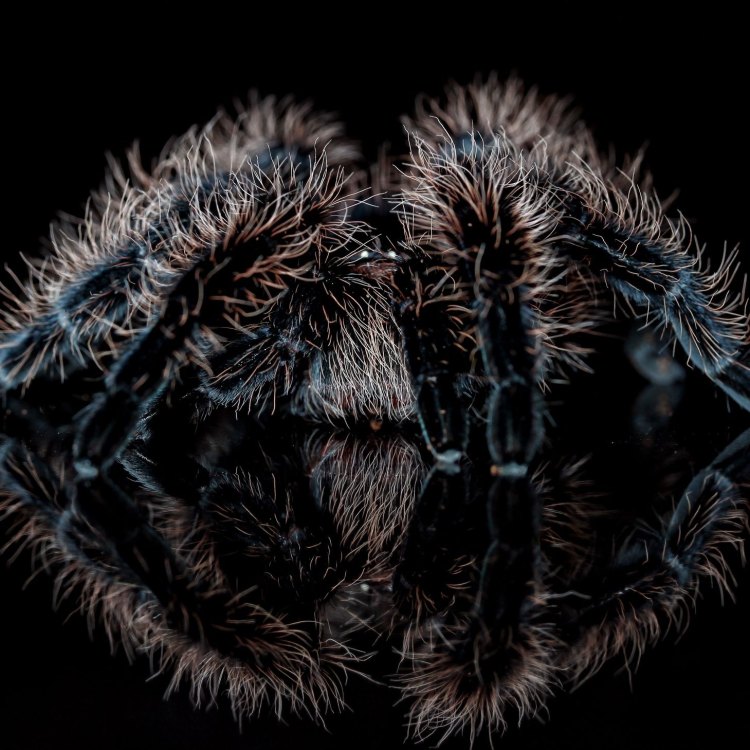
The Exotic and Fascinating Curly Hair Tarantula
Disclaimer: The content provided is for informational purposes only. We cannot guarantee the accuracy of the information on this page 100%. All information provided here may change without prior notice.


